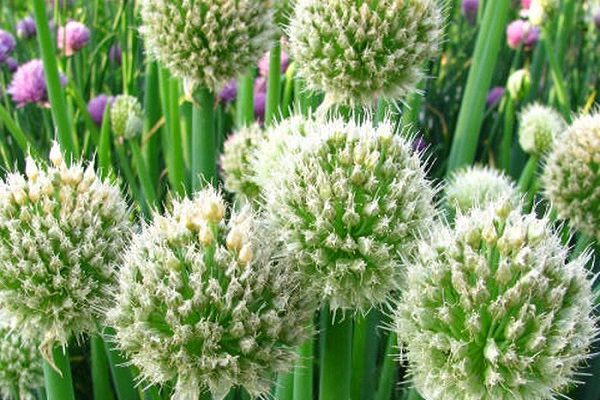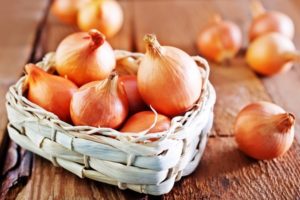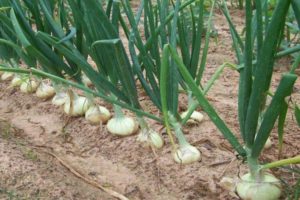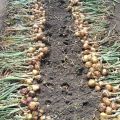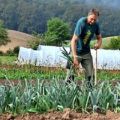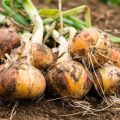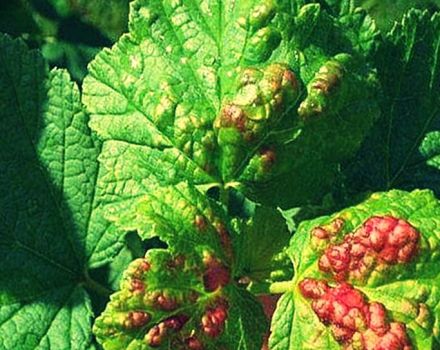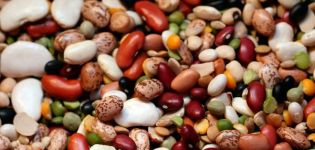How to grow black onions from seeds and when to remove them from the garden
Novice growers do not know that onion seeds of the required variety can be grown on their site. A useful and unpretentious vegetable does not require much attention and effort. It is grown in both biennial and annual culture. Using a number of simple agrotechnical techniques, it is possible to grow not only seedlings for planting in 1 season - the black onion is able to give a full harvest by the end of summer.
Black onion: planting
Growing popularity is gaining on the growing of onions from seeds for 1 season. This is a fast and cost effective way. The Strigunovsky variety, which is distinguished by its rounded shape and yellow color of the scales, depending on the method of cultivation from seeds, can be used to obtain a full onion harvest, as well as for growing sets.

There are many varieties of annual onions:
- acute: Chalcedony, Mayak, Globus, Lugansk;
- peninsula: Rossa de Ferenze, Amphora;
- sweet salad: Russian size, Exibishen and others.
You can get seeds for planting yourself by planting uterine bulbs in your area.
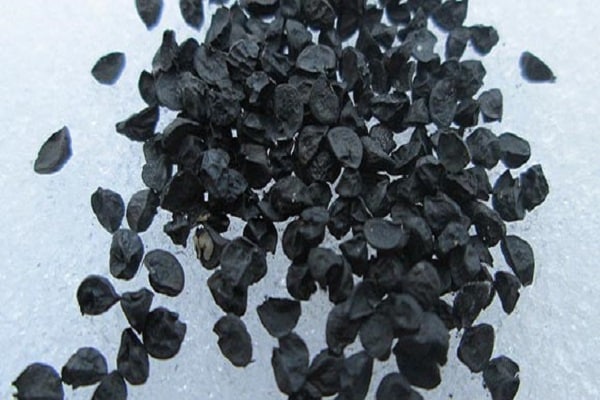
Preparing the garden
The beds for sowing black onions in open ground should be prepared in the fall. Dig up the earth, carefully removing the roots of the weeds. If this is not done, then in the spring the weed will drown out fragile shoots. It is difficult to weed the beds at the beginning of the growing season, since most of the seedlings can be removed along with the weeds.
Onions prefer loose fertile soils, therefore, during digging, it is necessary to add humus or peat to the ground at the rate of half a bucket per 1 m². It is impossible to use fresh manure instead of humus, as young shoots will get burned, hurt or die immediately. On dense, heavy soils, it is advisable to add sand.
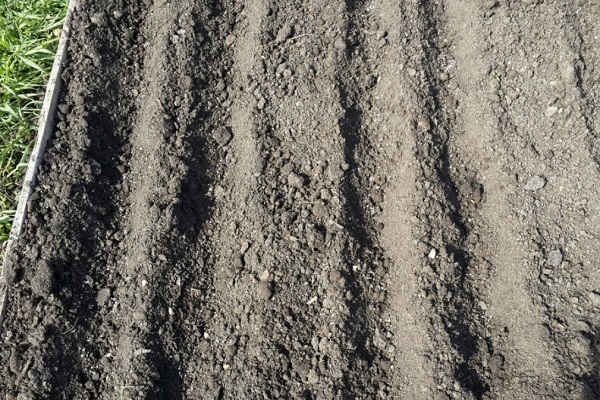
On the prepared area, ribbons-ridges should be marked. It is most convenient to make them 1 m wide. Thoroughly level the soil with a rake, breaking lumps. Cut shallow furrows with row spacing of at least 20 cm. In order for a burning vegetable to please with a high yield, it must be grown, observing a number of rules.
Sowing
Chernushka is sown in early spring, when there is still enough moisture in the soil. The seeds have time to hatch and grow before the onset of the dry period. It is advisable to start sowing during the February and March thaws so that the onion heads have time to form. Grown in an annual culture from seeds, the bulb weighs about 80-120 g.
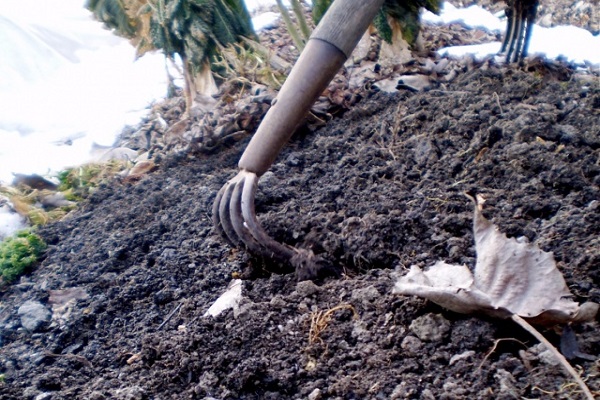
Before sowing, you can mix nigella with crushed chalk - this technique facilitates the work and reduces the consumption of planting material. To facilitate the care of seedlings, it is necessary to throw a seed of a lighthouse culture (for example, radish, lettuce) into the furrow every 10-15 cm.They will emerge much earlier than the bow and will mark the rows.
After planting, the furrows are covered with a small layer of moist soil (1.5-2 cm), compacted and mulched. The question of when to plant nigella, vegetable growers decide in different ways. Many people successfully use podzimny crops. Chernushka seeds are not afraid of the cold, and with the appearance of the first heat, they grow together.
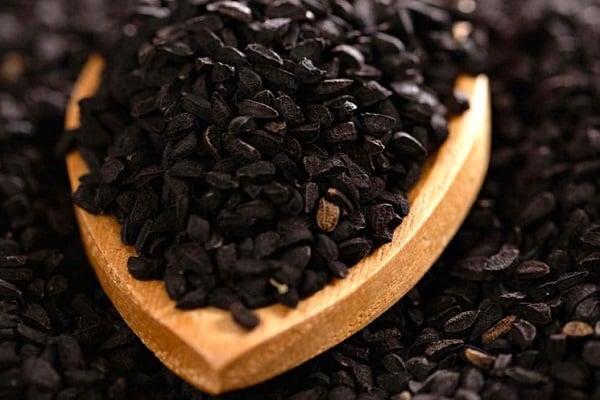
Nigella onions: growing
Growing onions from seeds during the summer without seedlings is not difficult. The correct selection of zoned annual varieties and competent agricultural technology will allow you to get a large harvest of a useful vegetable by autumn.
The specificity of cultivation lies in podwinter or early spring crops and the use of the seedling method in the northern regions.
In order for the one-year-old onion to be well stored, it is necessary to dig it out only after lodging and yellowing of the feather, making sure that the neck of the vegetable is completely dry. After harvesting, dry the onions thoroughly in the sun.
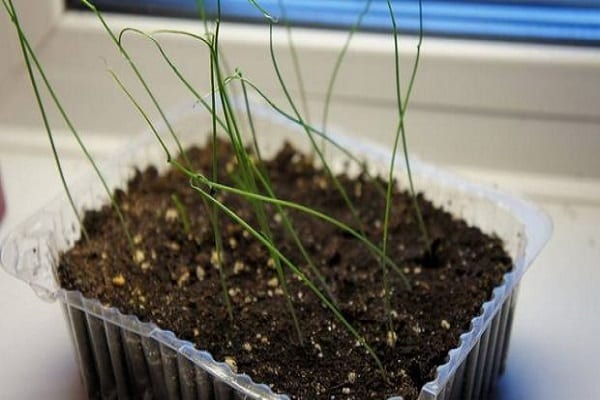
Growing annual varieties of black onions
Novice vegetable growers do not always manage to grow a good harvest of onions from nigella in 1 season. The main mistake is the wrong choice of the variety. Only annual varieties and hybrids are suitable, such as Lugansky, One-year Siberian, Karatalsky, Albion F1, Daytona F1 and others.
Using special agricultural techniques, you can get a full-weight onion head from a grain in just 1 season, which is much more profitable than growing onions in a two-year culture. Annual varieties are suitable not only for autumn and summer consumption, as they are well stored in winter. When the nigella is removed from the garden, they carefully look so that the neck of the plant is completely dry. Only in this case can the onion be considered suitable for winter storage.
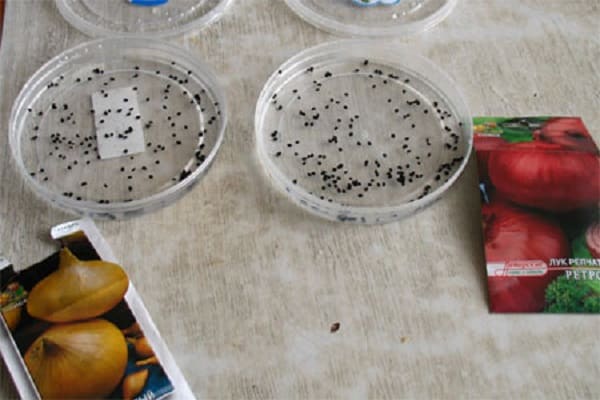
Seedlings of black onions
In the northern regions, chernushka does not have time to go through all stages of development in a short summer period. Even proven annual varieties do not always show excellent maturation in adverse conditions. In such cases, they resort to growing through seedlings.
Seeds can be sown from mid-February. Boxes (12 cm high) are filled with a mixture of turf and humus or use a ready-made mixture for seedlings.
Before sowing, containers with a mixture are disinfected. You can pour boiling water over them from a watering can or put them out in the cold for 2-3 days. Even if you collected onion seeds yourself, you need to disinfect them in a solution of manganese or ash. After processing, the seeds can be soaked in warm water until sprouting or immediately planted in moist soil.
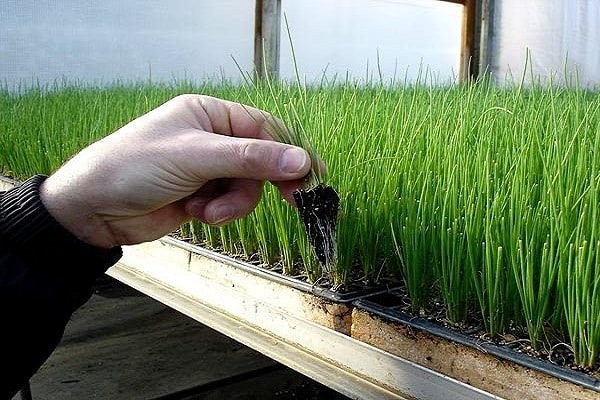
Chernushka is covered by 1-1.5 cm. The soil is slightly compacted and mulched. For quick germination, the containers are covered with a film, which is removed when seedlings appear. From mid-April, seedlings can be planted in a permanent place. Before planting, the roots and stems must be shortened so that the finished seedlings are no longer than 15–20 cm. The distance between plants in a row should be 7–10 cm. Planting and care in the open field is carried out according to the usual scheme.
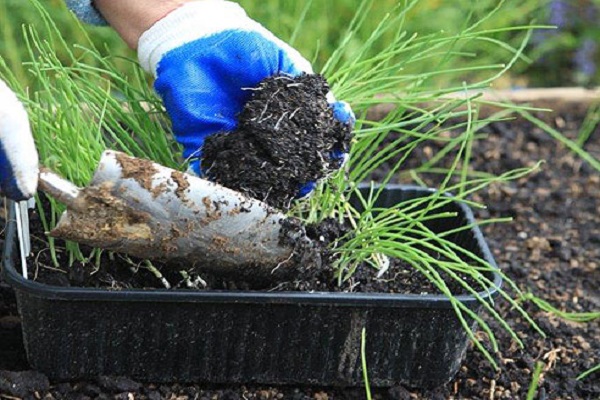
Seedless growing method
If you know how to grow onions correctly, then you can grow a full harvest in 130 days (the growing season of annual varieties). Sowing seeds in open ground is necessary during the February and March thaws. An even more reliable and easy way is winter sowing.
The beds are prepared in October, the furrows are cut and the first frost is expected. Nigella seeds are sown in frozen soil and sprinkled with soil or humus. Vegetation begins at the end of March. In a soil saturated with moisture, onions will give quick and friendly shoots. Care consists in weeding, thinning and watering the plants regularly. If you allow the thickening of the plantings, then you can get a small seed instead of a full-weight head.
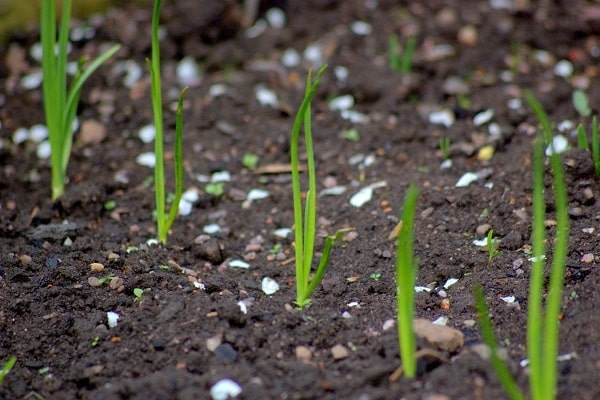
Nigella Onion: Getting seeds from your own material
You can grow high-quality seed on your own. To do this, in the spring, large beautiful bulbs of the variety you like are selected, disinfected in a manganese solution and soaked in warm water for a day. Then they are placed for germination at a temperature of + 10 ... +15 ° C.
Uterine bulbs are planted in the garden in the same way as onions on a feather, only the distance between the heads should be at least 15 cm. The neck of the bulb is located above ground level. The bulb drives out a powerful stem, at the top of which a large head with seed pods is formed. By the end of summer, the seeds ripen, and the film on the capsules begins to crack.

To prevent the seeds from spilling onto the ground, it is necessary to cut off the stems with heads and place them for ripening in a dry, ventilated room. When the heads are dry, they must be thoroughly kneaded in hands to remove the ripe seeds. Store nigella in a dark, dry and cool place.
Caring for the uterine bulbs consists in timely watering and the fight against diseases and pests. For preventive purposes, disease-resistant varieties should be selected, and also not to grow onions for more than 2 years in one place. Dill, carrots, marigolds should be planted next to onions, which scare off onion flies and other pests with their smell.
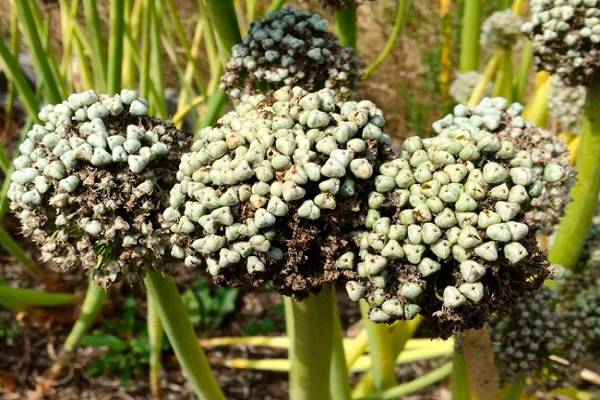
When to remove from the garden?
Harvesting begins in mid or late August. Lodging and yellowing of the tops are the signal to start harvesting. Before starting harvesting, you need to make sure that the neck of the plant is well dried. It is advisable to clean on a clear sunny day to you could dry the bulbs in the sun.
